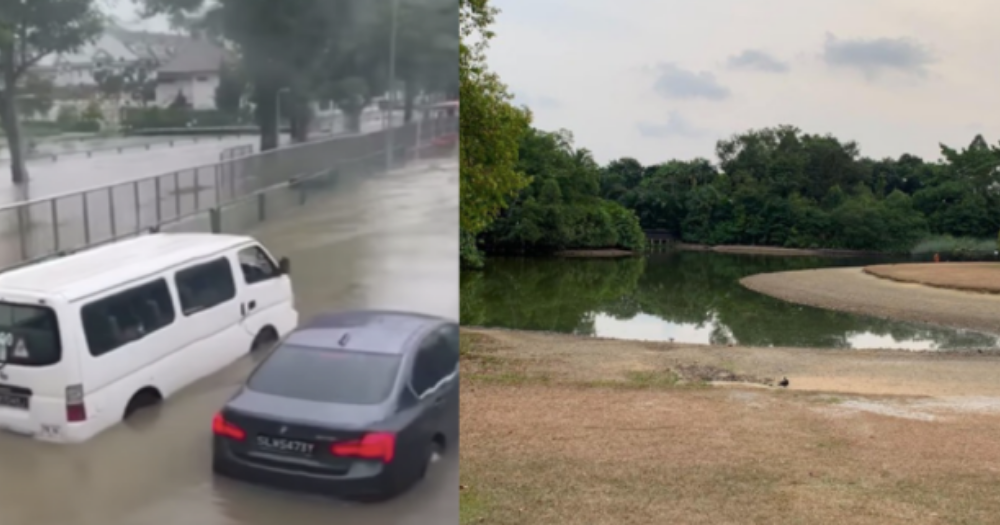“New normal” was definitely one of the buzzwords of the year 2020.
While it took us about a year to adapt to the disruptions caused by Covid-19 and going back to normalcy is now within sight, let us not forget about the other “new normal” that we have been grappling with in recent years – climate change.”
Extreme weather: the new normal with climate change
Extreme weather patterns have become more pronounced in recent years due to climate change, as Singapore residents have experienced it in the past few months.
February 2019 was the third warmest February recorded in 90 years, based on the mean monthly temperature, since temperature records began in 1929.
Last year was one of the hottest years on record with an exceptional low annual amount of rainfall -- we had the eighth-lowest annual total rainfall in the past 30 years.
Despite being a relatively dry year overall, we have also experienced more occurrences of intense heavy rainfall in 2020. And we experienced more of the same in 2021 too.
January 2021 was the second wettest January since rainfall records began in 1869, before a noticeably warm and dry February.
Crucially, an increasingly warm global climate is causing natural freshwater bodies around the world to disappear over time.
Just last month, the UN issued a sobering call on World Water Day for stronger efforts to address the global water crisis, as water scarcity is increasing to the point where more than half of the world’s population may be living in water-stressed areas by 2050.
While Singaporeans enjoy clean drinking water at the turn of the tap today, we need to be mindful that climate change could have a negative impact on our water supply.
Threat to our source of water
Without natural water resources, Singapore relies heavily on rainfall for water. However, our limited land size poses a constraint to the amount of rainwater that we can harvest.
Two-thirds of Singapore's land area is used as water catchment – an extensive network of drains, canals and rivers which collect and channel water to our 17 reservoirs.
But with extreme weather conditions potentially causing more prolonged dry spells, water levels in our reservoirs could be affected.
Imported water from Johor, which contributes to our water supply, is also affected by extreme weather. During a dry spell in 2016, water levels in Johor’s Linggiu Reservoir plunged to a historic low of 20 per cent.
The good news is that we have diversified our water supply through the “four national taps”, by adding NEWater and desalinated water. Both are weather-resilient sources – NEWater is produced by reclaiming used water, while the latter relies on treating seawater.
We have also utilised technology to strengthen the resilience of our water supply.
The newly opened Keppel Marina East Desalination Plant is an example of how Singapore manages weather uncertainties as it is capable of treating both seawater and freshwater – a first in Singapore.
During rainy periods, this desalination plant will treat freshwater drawn from the nearby Marina Reservoir, and switch to treating seawater instead during dry spells.
That said, we must not take clean water for granted as desalination is an energy intensive process and resources have to be invested to build the necessary infrastructure.
Existential crisis
Low-lying coastal areas or small countries like Singapore will also have to contend with rising sea levels as the glaciers and sea ice melt at an unprecedented rate.
30 per cent of Singapore’s land area is less than 5 metres above the mean sea level.
Many parts of Singapore could possibly be submerged under water if nothing is done to fortify our island against climate change.
But fret not, the government has looked to experienced countries such as the U.S., UK and the Netherlands for inspiration to protect our vulnerable coastlines.
Last year, national water agency PUB was appointed as National Coastal Protection Agency to coordinate whole-of-government efforts to implement strategies to combat the threat of rising sea levels. .
So what can individuals do to contribute to this fight against climate change?
Conversations related to climate action have been centred on making lifestyle changes such as reducing the use of disposables.
Adding on to that, it’s about time we pay more attention to how climate change can affect water security and the urgent need to do something about it now.
No vaccine to climate change, water conservation more important than ever
As the climate is changing, every drop of water becomes even more precious and difficult to produce.
It’s our responsibility, as individuals, to ensure that Singapore has a sustainable source of water in the long run by making every drop of water count. When less water is consumed, it also means less energy output from our treatment plants which in turn reduces our collective carbon footprint.Everyone can do our part to contribute to water sustainability in Singapore and it’s even more important for us to act now.
Find out how you can play your part today at MakeEveryDropCount.gov.sg.
If you like what you read, follow us on Facebook, Instagram, Twitter and Telegram to get the latest updates.
